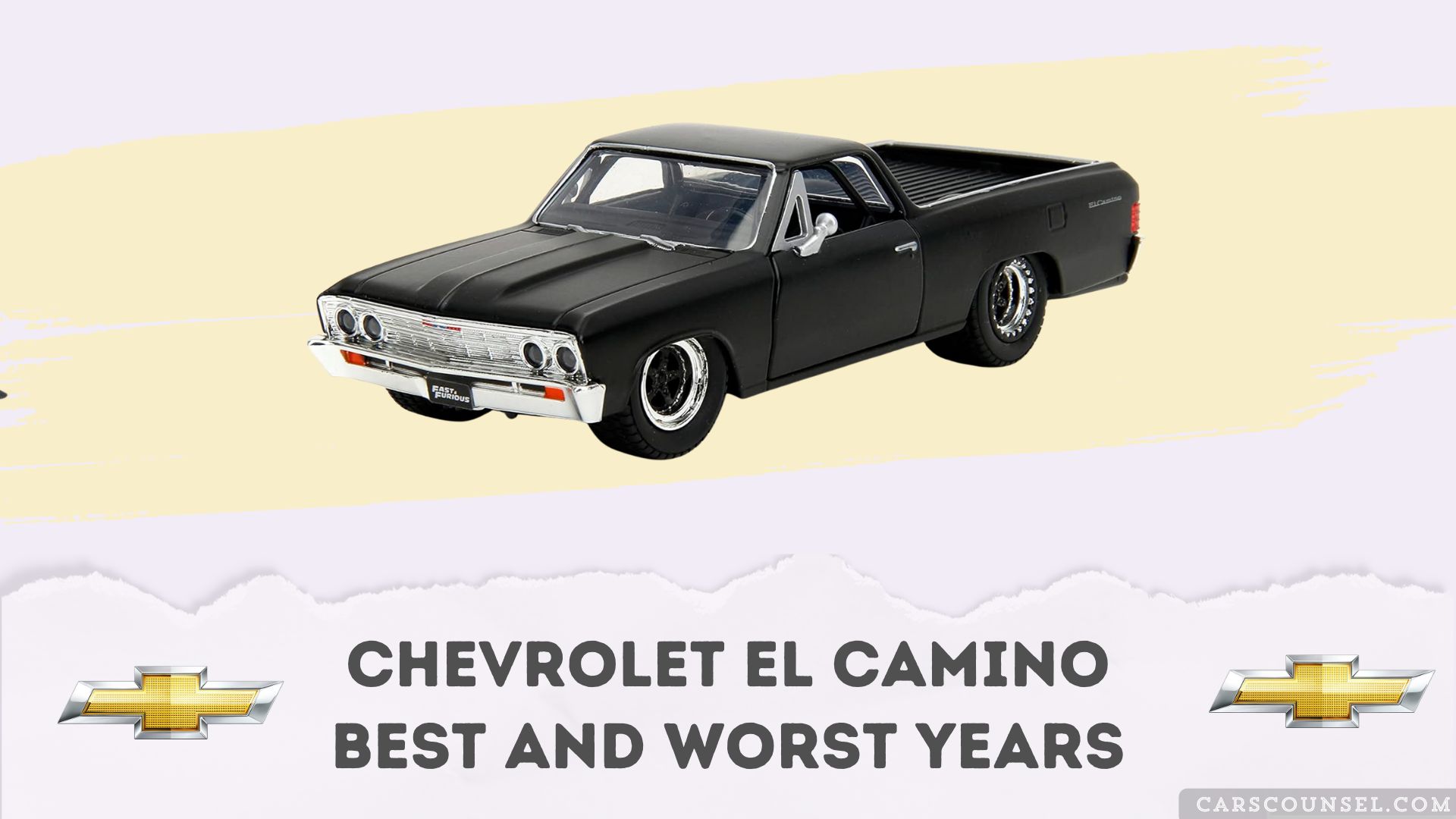As you weigh your options for a classic Chevrolet El Camino, it’s essential to know which years to target and which to avoid. You’ll want to focus on models between 1968 and 1972, which offer a sweet spot of simplicity, ease of repair, and fewer regulatory hassles. But what makes these years stand out, and what pitfalls do the other models hold? Let’s take a closer look at what to expect from each generation.

Quick Navigation
Key Takeaways
- Avoid 1973 and later models due to complex systems, emission control testing, and harder-to-find parts.
- 1968-1972 models are desirable for their simpler designs, easier repairs, and exemption from emissions control testing in some states.
- 1964-1967 models have the simplest designs, making repairs easier and reducing failure rates, with easier-to-find and less expensive parts.
- Be cautious of rust spots, uneven tire wear, and modified engines, as they can indicate major problems and poor workmanship.
- Look for a clean title, minimal wear and tear, a well-maintained engine, and a well-documented maintenance history for a reliable purchase.
Years to Avoid and Desirable Years
When considering a Chevrolet El Camino, it’s essential to know which years to avoid and which ones are desirable.
You’ll want to steer clear of 1973 and later models, as they come with computerized systems and emission control testing that can make repairs a nightmare.
On the other hand, 1968-1972 models are desirable due to ease of parts reproduction and availability, as well as exemption from emissions control testing in certain states.
Simpler designs like 1964-1967 models are also coveted for their ease of repair and lower likelihood of complex system failures.
Inspection and Red Flags
Before you start negotiating the price of that Chevrolet El Camino, make sure you’ve done your due diligence and inspected the vehicle thoroughly. Look for rust spots, especially on the underside, as they can be a major red flag. Check the front tires for uneven wear, which could indicate alignment issues. A good one will have a clean title, minimal wear, and a well-maintained engine. Be cautious of a coupe utility with a big block engine that’s been modified poorly.
| Red Flags | Good Signs |
|---|---|
| Rust spots on the underside | Clean title and minimal wear |
| Uneven front tire wear | Well-maintained engine and interior |
| Modified big block engine | Original parts and minimal rust |
When looking at performance cars, make sure to check out our guides on models like the Chevrolet Vega, Chevrolet Express, Chevrolet blazer and Chevrolet Bolt. Knowing which model years to target and which to avoid is crucial. Our expert reviews break down these models, providing insights into the years that are celebrated for their engineering excellence and driving satisfaction, as well as those that are best to avoid due to potential issues.

